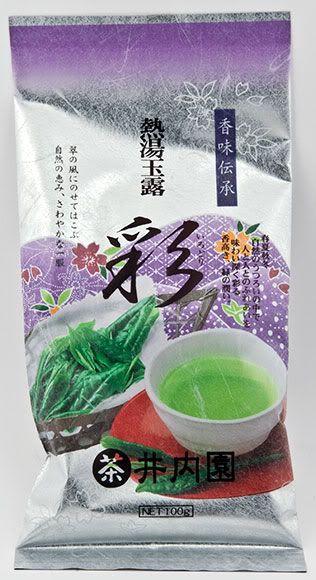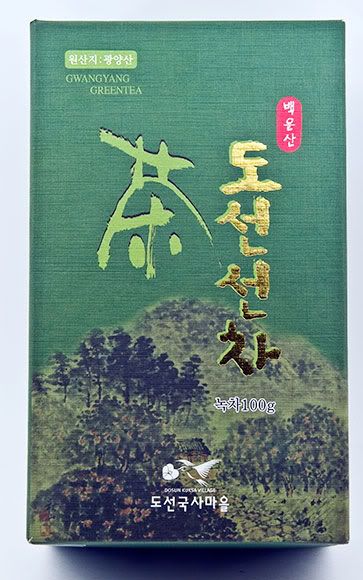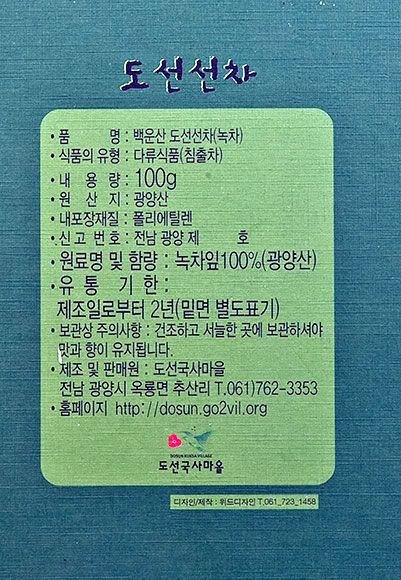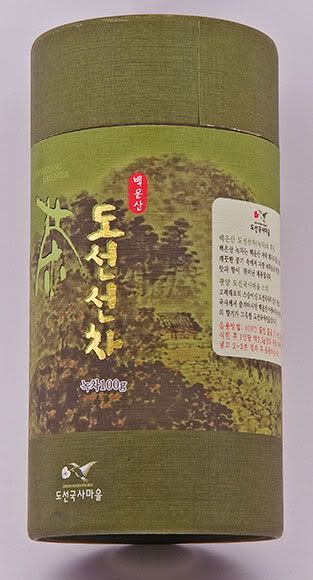OK, I opened the
Gwangyang tea, the one in the fancy box and cardboard cylinder, and brewed it a couple times. I used 2.50 grams in a 100 ml gaiwan at 150° F and infused: 1 m, 1 m, 2 m, 3 m, 3 m, 4.5 m, 6 m, + a couple long untimed rounds.
The dry leaves surprised me. For some reason I was expecting something more like a Japanese green, but these leaves look like a Chinese green, specifically
Meng Ding Gan Lu or
Dong Ting Bi Luo Chun: small gray-green twists of leaf with virtually no tips.
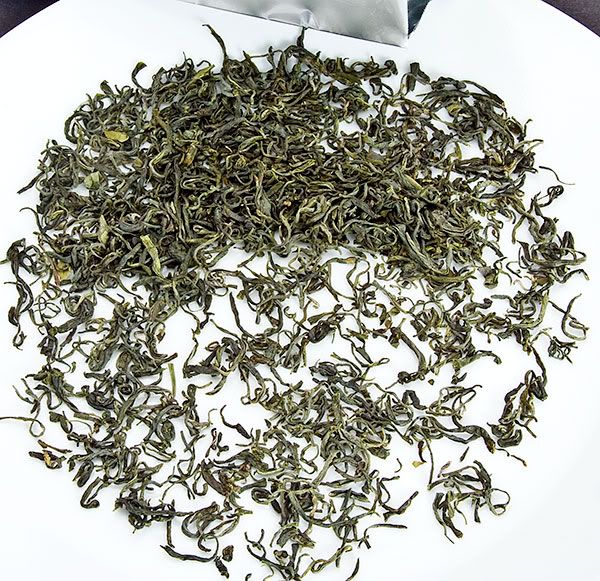 (Either image may be clicked for a larger file)
(Either image may be clicked for a larger file)
The liquor started out very, very pale yellow slightly tinged with green. By the third infusion it reversed to a very pale green with yellow tinge. The aroma was pleasant, reminding me of citrus flowers, with a baked goods smell: sugar cookies I'd say. The taste was as light as any tea I have had. It reminded me of some slightly flavored
Dan Congs I have had. A bit astringent, increasingly so if I pushed it. Off and on I noticed a tiny viscosity and a nice aftertaste. The tern "
refreshing" kept coming to mind. It seemed like it freshened my breath. Maybe that is the cooling or mint sensation some reviewers talk about. I was pleased to find that even the 5th infusion carried a fine aftertaste!
The spent leaves do not evidence care or love. They are mostly broken pieces of dark green medium small leaves. There are a lot of stems, one
tip + 2, and a few whole or nearly whole leaves. Some pieces are rather different in color.

Overall, I am glad I had the chance to try this tea, but I would not purchase it again even if it
were available to me. The flavor is just too light. The experience here is mostly olfactory. I have never brewed a green that lasted so many infusions, in that respect it was more like a yellow tea than a green.
